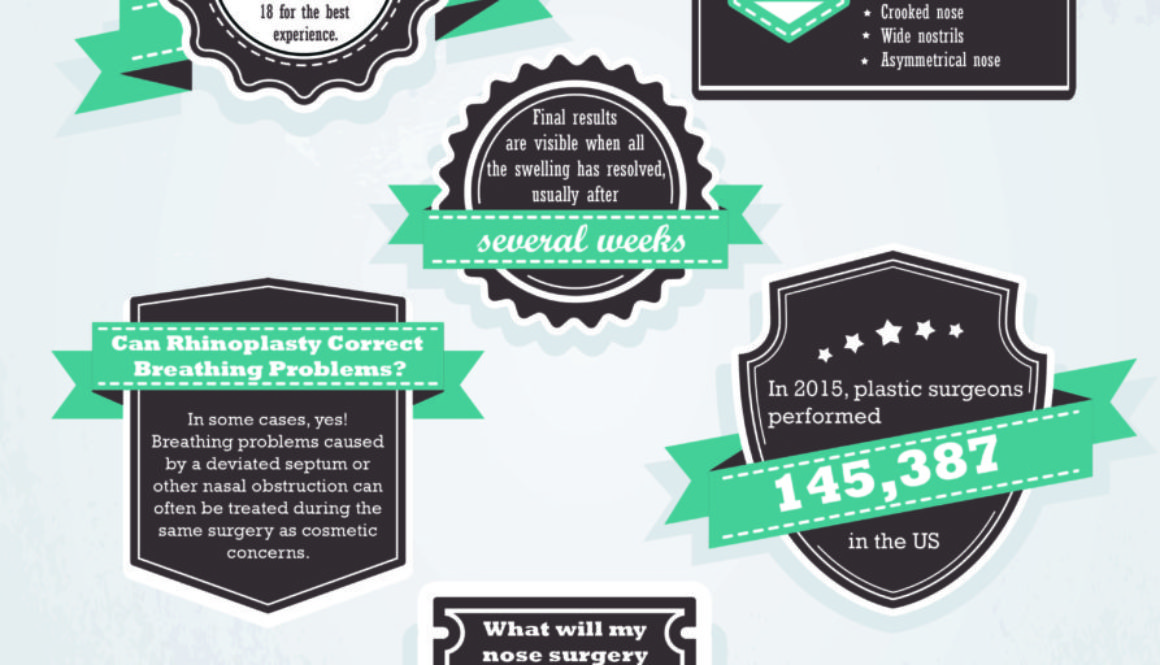Frequently Asked Questions about Nose Surgery
Cosmetic nose surgery (or a “nose job,” as it’s often called) is a very well-known plastic surgery. But it’s also been the subject of many rumors and misunderstandings, so when future patients research their surgery, they don’t know what’s fact and what’s fiction. In more than 20 years as a double board-certified plastic surgeon, I’ve heard just about every question in the book. So, to help future patients learn more about the procedure they’re considering, I’m discussing five common questions about nose surgery.
How does nose surgery change the shape of my nose?
Cosmetic nose surgery, or rhinoplasty, is different in every patient depending on their specific goals. The procedure can be customized to make the nose smaller or larger, adjust the width of the nostrils, change the angle and/or size of the nasal tip, remove a bump on the bridge of the nose, straighten a crooked nose, and much more. Depending on the ultimate goal, this can be done by adjusting the bones of the nose, removing cartilage from the nose or grafting more of your own cartilage from other areas, and other techniques.
I never see anyone with scars from nose surgery. Why?
One of the advantages of rhinoplasty is that it leaves little or no visible scarring. There are two basic approaches: an open rhinoplasty or a closed (also called endonasal) rhinoplasty. Open nose surgery uses an incision across the small area between your nostrils, called the columella. When it’s healed, this scar is barely visible at all, even in the rare occasion that someone looks directly up at your nose from underneath. A closed rhinoplasty, on the other hand, leaves no visible scarring at all because the only incisions are inside the nostrils. The approach your plastic surgeon uses will depend on your cosmetic goals and what needs to be done to accomplish them.
Is it true that rhinoplasty can help people breathe better?
In some cases, yes. Nose surgery can be performed to correct structural breathing problems in the nose like a deviated septum, and cosmetic changes can often be made during this same surgery. However, rhinoplasty doesn’t improve other breathing issues like asthma.
I’ve heard about the Band Aid Mini Facelift that you perform under local anesthesia. Can you do nose surgery without general anesthesia as well?
You’re correct that one of the reasons my Band Aid Mini Facelift, Band Aid Liposuction, Band Aid Tummy Tuck and other Band Aid procedures are so popular is that they don’t require general anesthesia, so the risks and the recovery time are reduced. However, cosmetic nose surgery needs to be performed under general anesthesia to produce satisfying results.
How soon will I see the results of my nose surgery?
As with any surgery, your body isn’t 100% recovered by the time you feel well enough to return to work or your other daily activities. You will have swelling after your surgery, and while most swelling subsides in a few weeks (to the point that it’s undetectable to most people), it could take several months for your swelling to fully resolve and your nose to heal into its new contours. Every patient heals at their own pace, so there isn’t a specific deadline. Still, as excited as you may be to enjoy your new look, it’s important to be patient and let your body heal.
If you have questions about rhinoplasty or another plastic surgery you’re considering, remember that you don’t need to find the answers on your own. You can schedule as many consultations as you want with a board-certified plastic surgeon until you have all the answers you need and you feel comfortable moving forward. To discuss your specific cosmetic surgery questions and find out how I can help you become your most confident and beautiful self, schedule a plastic surgery consultation with Dr. John LeRoy. For more patient health tips and cosmetic surgery facts, follow me on Facebook, Twitter, and Google+



